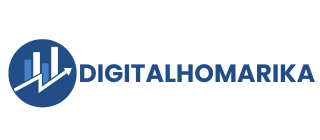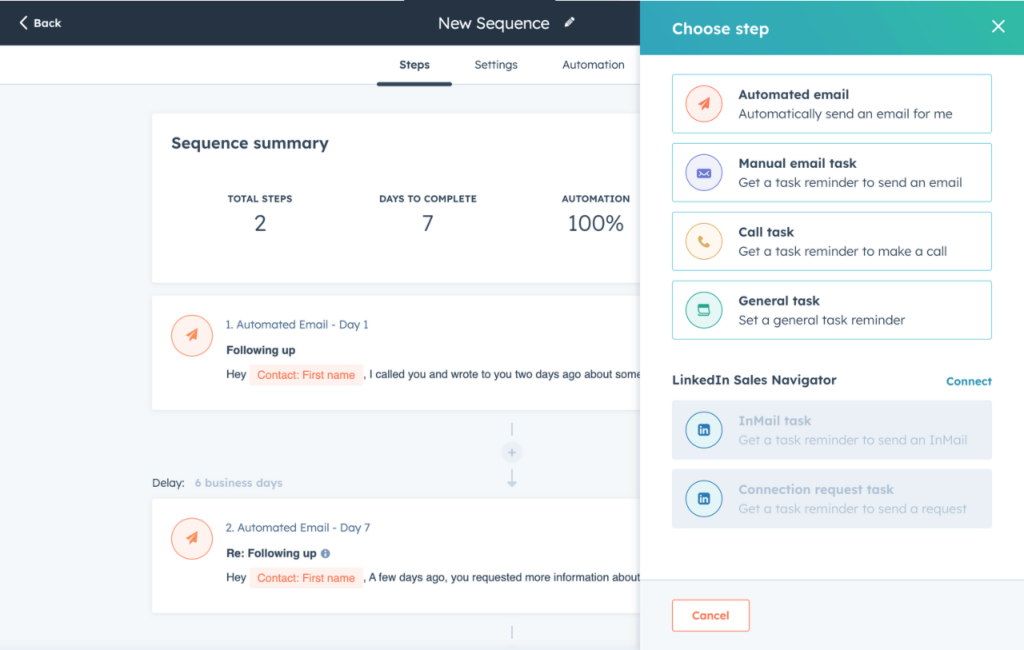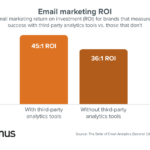Automated email sequences for sales streamline communication and nurture leads effectively. They help convert prospects into customers through targeted messaging.
Automated email sequences play a crucial role in modern sales strategies. They allow businesses to engage with potential customers at various stages of their buying journey. By delivering timely and relevant content, these sequences can build trust and foster relationships.
Each email serves a specific purpose, whether to educate, inform, or prompt action. The beauty of automation lies in its efficiency, enabling sales teams to focus on closing deals rather than managing every interaction. Well-crafted sequences can significantly boost conversion rates and drive sales growth. Embracing this approach allows businesses to stay competitive in a fast-paced digital landscape.
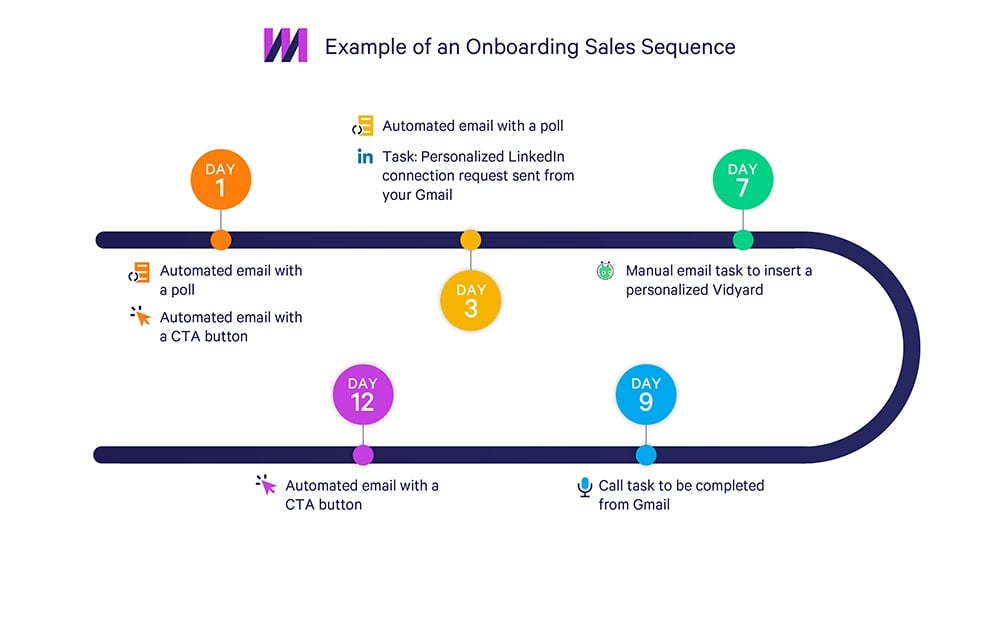
Credit: www.mixmax.com
The Power Of Automated Email Sequences
Automated email sequences revolutionize sales strategies. They help businesses reach customers effectively. These sequences nurture leads and drive conversions over time.
With automated emails, communication remains consistent. This builds trust and loyalty. Let’s explore how to maximize sales opportunities.
Maximizing Sales Opportunities
Automated email sequences target specific customer needs. They ensure timely follow-ups. This increases the chances of closing deals.
- Personalization: Tailor messages based on user behavior.
- Segmentation: Group your audience for relevant content.
- Consistency: Send regular emails without manual effort.
These strategies maximize every sales opportunity. Each email can guide customers through the buying journey.
Benefits For Time Management
Automated email sequences save valuable time. They handle multiple tasks simultaneously. This allows sales teams to focus on other priorities.
| Benefit | Description |
|---|---|
| Efficiency | Sends emails at optimal times without manual input. |
| Scalability | Manage larger audiences without increasing workload. |
| Tracking | Monitor customer engagement easily. |
Time management improves with automation. Teams can sell more and stress less.
Crafting Your Email Sequence Strategy
A well-planned email sequence can boost your sales. It guides potential customers through their journey. Follow these steps to create a winning strategy.
Identifying Target Audience
Knowing your audience is crucial. Identify who will receive your emails. Focus on their needs and interests. Here are some tips to define your target audience:
- Analyze existing customer data.
- Conduct surveys for feedback.
- Use social media insights.
Create buyer personas. These personas represent your ideal customers. Include age, gender, location, and interests.
| Persona | Characteristics |
|---|---|
| Budget Buyer | Price-sensitive, seeks value. |
| Quality Seeker | Prioritizes quality over price. |
| Trend Follower | Wants the latest products. |
Setting Clear Objectives
Define what you want to achieve. Setting clear goals helps guide your email sequence. Here are common objectives:
- Increase product awareness.
- Boost customer engagement.
- Drive traffic to your website.
- Generate more leads.
- Enhance customer retention.
Make your objectives SMART: Specific, Measurable, Achievable, Relevant, Time-bound.
For example, aim to increase website traffic by 20% in three months. This clarity boosts focus and effectiveness.
Essential Components Of A Sales Email Sequence
Creating an effective sales email sequence is crucial. It helps nurture leads and boosts conversions. Each component plays a vital role in achieving your sales goals.
Effective Subject Lines
The subject line grabs attention. It determines whether your email gets opened. Here are tips for crafting effective subject lines:
- Keep it short: Aim for 6-10 words.
- Use action words: Inspire readers to take action.
- Create urgency: Encourage quick responses.
- Personalize: Include the recipient’s name or company.
Examples of effective subject lines include:
| Subject Line | Type |
|---|---|
| Unlock Your Free Trial Now! | Urgent |
| John, Discover Exclusive Offers Just for You | Personalized |
Personalization Techniques
Personalization increases engagement. Tailor emails to individual recipients. Use these techniques:
- Use their name: Address recipients directly.
- Segment your audience: Group leads by interests.
- Reference past interactions: Remind them of previous conversations.
- Customize content: Offer solutions based on their needs.
Personalization leads to higher open and click rates. It builds trust and rapport.
Strong Calls-to-action
Every email must include a strong call-to-action (CTA). A clear CTA guides the reader. Here are tips for effective CTAs:
- Be direct: Use clear language.
- Make it visible: Use buttons instead of links.
- Create urgency: Use phrases like “Limited time offer.”
- Test different CTAs: Find what works best.
Examples of strong CTAs include:
- Get Started Today!
- Claim Your Free Trial!
- Schedule a Demo Now!
Effective CTAs lead to higher conversion rates. They motivate the reader to take action.
Best Practices For Email Sequence Timing
Email sequence timing plays a crucial role in sales success. Proper timing can increase engagement, boost conversions, and enhance customer relationships. Understanding how to effectively time your emails leads to better results.
Determining Frequency
Finding the right email frequency is essential. Too many emails can overwhelm your audience. Too few may cause them to forget you. Here are key points to consider:
- Know Your Audience: Understand their preferences.
- Test Different Frequencies: Experiment with weekly vs. bi-weekly.
- Monitor Engagement: Track open and click rates.
Use this table for quick reference:
| Frequency | Pros | Cons |
|---|---|---|
| Daily | High engagement potential | Risk of overwhelming users |
| Weekly | Good balance | May be forgotten |
| Bi-weekly | Less pressure on audience | Slow engagement growth |
Strategic Scheduling
Choosing the right time to send emails is vital. Send emails at times when your audience is most active. Consider these tips:
- Analyze Data: Use analytics to find peak engagement times.
- Consider Time Zones: Schedule emails based on your audience’s location.
- Test Different Days: Experiment with weekdays vs. weekends.
Commonly effective times include:
- Tuesday: High open rates.
- Thursday: Good for conversions.
- Saturday: Low competition for attention.
Strategic scheduling maximizes your chances of success.
Creating Compelling Content
Compelling content drives engagement and boosts sales in automated email sequences. Focus on clarity and relevance. Grab attention and hold it with each email.
Writing Engaging Body Copy
Body copy needs to be clear and captivating. Use simple language. Break information into digestible parts. Follow these tips to create engaging content:
- Use a Conversational Tone: Write as if you are speaking to a friend.
- Ask Questions: Encourage readers to think and engage.
- Highlight Benefits: Show how your product solves a problem.
- Include a Clear Call to Action: Tell readers what to do next.
Keep sentences short. Use active voice for clarity. This makes your message stronger. Aim for a friendly approach to connect with your audience.
Using Visuals And Formatting
Visuals enhance engagement. They make emails more appealing. Use images, graphs, and icons. Here’s how to format your content:
| Element | Purpose |
|---|---|
| Images | Break text and illustrate points. |
| Headings | Guide readers through the content. |
| Bullet Points | Highlight important information quickly. |
Keep formatting consistent. Use bold for emphasis on key points. This helps important information stand out. Ensure visuals are relevant and high quality.

Credit: www.pclub.io
Leveraging Automation Software
Automated email sequences boost sales and save time. They nurture leads and engage customers effortlessly. With the right tools, businesses can streamline their sales process. This section explores how to choose effective software and integrate it with sales platforms.
Choosing The Right Tools
Selecting the best automation software is crucial. Here are some key factors to consider:
- User-Friendly Interface – Easy to navigate and set up.
- Customization Options – Tailor emails to fit your brand.
- Analytics and Reporting – Track performance and optimize campaigns.
- Integration Capabilities – Connect with other tools seamlessly.
Popular options include:
| Tool Name | Best For |
|---|---|
| Mailchimp | Small to medium businesses |
| HubSpot | Comprehensive marketing solutions |
| ActiveCampaign | Advanced automation features |
Integration With Sales Platforms
Effective integration enhances your email marketing efforts. It connects data from different platforms.
Consider these popular sales platforms:
- Salesforce
- Zoho CRM
- Pipedrive
Benefits of integration include:
- Centralized Data – Access all customer information easily.
- Improved Targeting – Send personalized messages based on behavior.
- Time Efficiency – Automate repetitive tasks and focus on selling.
Integrating email automation with sales platforms boosts productivity. It creates a seamless workflow for your sales team.
Measuring The Success Of Your Email Sequence
Understanding how your automated email sequences perform is crucial. Measuring success helps you refine strategies. This leads to better engagement and higher sales.
Key Performance Indicators
To gauge success, focus on these Key Performance Indicators (KPIs):
- Open Rate: Shows the percentage of recipients who opened your email.
- Click-Through Rate (CTR): Indicates how many clicked on your links.
- Conversion Rate: Measures how many completed the desired action.
- Unsubscribe Rate: Reflects how many opted out of your email list.
- Bounce Rate: Shows the percentage of emails that did not reach inboxes.
Track these KPIs regularly. They reveal what works and what doesn’t.
A/b Testing And Refinement
A/B testing helps improve your email sequences. It allows you to compare two versions of an email. Here’s how to do it:
- Choose a Variable: This could be the subject line or call-to-action.
- Create Variants: Design two versions of your email.
- Segment Your Audience: Divide your list into two equal groups.
- Send Emails: Dispatch each version to its respective group.
- Analyze Results: Check which version performed better.
Use results to refine your email sequences. Small changes can lead to big improvements.
Advanced Strategies For Email Sequence Optimization
Optimizing your email sequences can significantly boost your sales. Applying advanced strategies enhances relevance and engagement. This section covers key tactics to elevate your email marketing efforts.
Segmentation For Increased Relevance
Segmentation divides your audience into smaller groups. This allows you to send tailored messages. Benefits of segmentation include:
- Higher open rates: Targeted emails attract more attention.
- Increased conversions: Relevant content drives action.
- Improved customer satisfaction: Personalized emails enhance user experience.
To effectively segment your audience, consider the following criteria:
| Criteria | Description |
|---|---|
| Demographics | Age, gender, and location information. |
| Behavior | Past purchases and website interactions. |
| Interests | Specific preferences and hobbies. |
Segment your list to deliver messages that resonate. Use tools like CRM software to manage segmentation easily.
Dynamic Content And Trigger Emails
Dynamic content personalizes emails based on user data. This increases relevance and engagement. Use dynamic elements like:
- User names: Start with a personal greeting.
- Product recommendations: Suggest items based on past purchases.
- Location-specific offers: Tailor promotions to specific regions.
Trigger emails automatically send based on user actions. Common triggers include:
- Welcome emails: Send after a new subscription.
- Abandoned cart reminders: Notify users who leave items behind.
- Re-engagement campaigns: Reach out to inactive users.
Implementing dynamic content and trigger emails helps in maintaining engagement. This leads to higher conversion rates.
Case Studies: Successful Sales Email Sequences
Automated email sequences drive sales effectively. They help nurture leads and close deals. Analyzing real-world examples reveals their power. Here are industry-specific cases showing success.
Industry-specific Examples
- Software Development
- A tech company automated a 5-email sequence.
- Emails included product demos and customer testimonials.
- Result: 30% increase in demo requests.
- E-commerce
- A clothing brand used abandoned cart emails.
- Sent reminders with discount codes.
- Result: 25% recovery of lost sales.
- Real Estate
- An agency sent monthly market updates.
- Included local property listings and tips.
- Result: 40% rise in inquiries from leads.
Analysis Of Results
| Industry | Strategy | Outcome |
|---|---|---|
| Software Development | 5-email sequence with demos | 30% increase in demo requests |
| E-commerce | Abandoned cart reminders | 25% recovery of lost sales |
| Real Estate | Monthly market updates | 40% rise in inquiries |
These case studies highlight the effectiveness of automated email sequences. They engage customers and drive sales. Each industry adapts strategies to fit its needs. Results show the value of targeted communication.
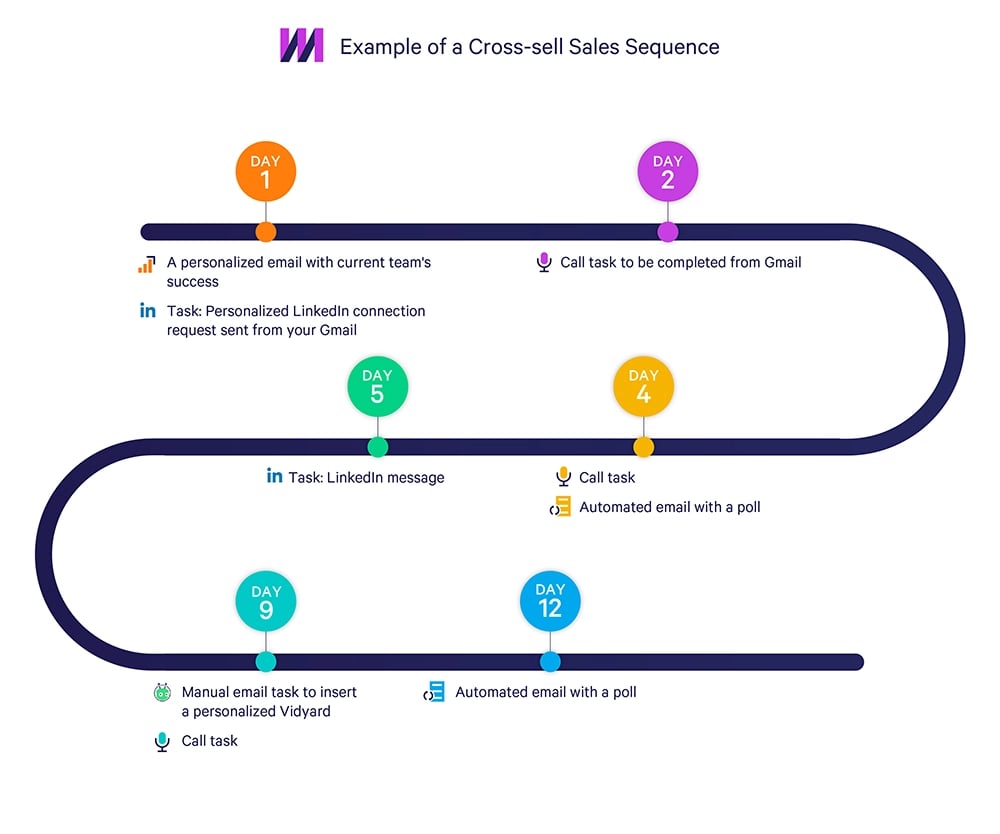
Credit: www.mixmax.com
Common Pitfalls To Avoid
Automated email sequences can boost sales. Yet, many fall into traps that hinder success. Recognizing these pitfalls is essential. Below are common mistakes and how to avoid them.
Overcoming Spam Filters
Spam filters can block your emails. Understanding how to bypass them is crucial. Here are some tips:
- Avoid spammy words: Words like “free” or “guaranteed” can trigger filters.
- Use a verified domain: Send emails from a trusted domain.
- Keep your list clean: Regularly remove inactive subscribers.
- Personalize emails: Use the recipient’s name in the subject line.
Test your emails before sending. Tools are available to check spam scores. Make adjustments as needed. This helps ensure your emails reach the inbox.
Avoiding Email Fatigue
Email fatigue occurs when subscribers feel overwhelmed. Too many emails can lead to unsubscriptions. Here are some strategies to prevent this:
- Set a clear schedule: Decide how often to send emails.
- Segment your audience: Tailor messages to specific groups.
- Provide value: Ensure each email offers useful information.
- Monitor engagement: Track opens and clicks to adjust frequency.
Balancing frequency is key. Less can be more. Keep your audience engaged without overwhelming them.
The Future Of Email Automation In Sales
Email automation is changing fast. Businesses want to connect with customers. Automated email sequences make this easier. They save time and increase sales. The future looks bright for this technology.
Emerging Trends
New trends are shaping email automation. Here are some key trends:
- Personalization: Emails are tailored to individual needs.
- Segmentation: Groups of customers receive different messages.
- AI Integration: Artificial intelligence improves targeting.
- Mobile Optimization: Emails are designed for mobile devices.
- Interactive Content: Emails include quizzes and polls.
Predictive Analytics In Email Marketing
Predictive analytics is a game-changer. It uses data to forecast customer behavior. This helps in creating effective email campaigns. Businesses can send the right message at the right time.
| Feature | Description |
|---|---|
| Customer Insights | Understand what customers like and need. |
| Timing Optimization | Send emails when customers are most active. |
| Content Recommendations | Suggest products based on past behavior. |
Businesses that use predictive analytics see better results. They engage customers more effectively. Automated email sequences become smarter and more efficient.
Frequently Asked Questions
What Are Automated Email Sequences For Sales?
Automated email sequences for sales are pre-scheduled emails sent to prospects. They nurture leads through targeted content. This strategy enhances engagement and guides potential customers through the sales funnel. By automating communication, businesses save time while maintaining personalized interactions that drive conversions.
How Do I Create Effective Email Sequences?
To create effective email sequences, identify your audience and their needs. Develop a clear objective for each email in the sequence. Use engaging subject lines and concise content. Monitor performance metrics to refine your approach. Testing different strategies helps optimize engagement and boost conversions over time.
What Tools Are Best For Email Automation?
Some of the best tools for email automation include Mailchimp, HubSpot, and ActiveCampaign. These platforms offer user-friendly interfaces and robust features. They allow businesses to segment audiences, schedule emails, and track performance. Choose a tool that aligns with your specific sales goals and budget.
How Often Should I Send Automated Emails?
Sending automated emails should be balanced to avoid overwhelming recipients. A good rule is to send one to three emails per week. This frequency keeps your audience engaged without causing annoyance. Always monitor responses and adjust your schedule based on audience feedback and engagement rates.
Conclusion
Automated email sequences can transform your sales strategy. They save time and engage potential customers effectively. By personalizing content and timing, you can boost conversions significantly. Implementing these sequences helps nurture leads and drive consistent revenue. Start leveraging automation today to enhance your sales process and achieve lasting results.
